Solar eclipse of May 30, 1984
An annular solar eclipse occurred on May 30, 1984. A solar eclipse occurs when the Moon passes between Earth and the Sun, thereby totally or partly obscuring the image of the Sun for a viewer on Earth. An annular solar eclipse occurs when the Moon's apparent diameter is smaller than the Sun's, blocking most of the Sun's light and causing the Sun to look like an annulus (ring). An annular eclipse appears as a partial eclipse over a region of the Earth thousands of kilometres wide. Annularity was visible in Mexico, the United States, Azores Islands, Morocco and Algeria. It was the first annular solar eclipse visible in the US in 33 years. The moon's apparent diameter was near the average diameter because occurs 6.7 days after apogee (Apogee on May 24, 1984 at 01:00 UTC) and 7.8 days before perigee (Perigee on June 7, 1984 at 11:15 UTC).
| Solar eclipse of May 30, 1984 | |
|---|---|
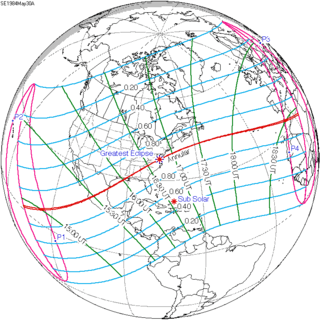 Map | |
| Type of eclipse | |
| Nature | Annular |
| Gamma | 0.2755 |
| Magnitude | 0.998 |
| Maximum eclipse | |
| Duration | 11 sec (0 m 11 s) |
| Coordinates | 37.5°N 76.7°W |
| Max. width of band | 7 km (4.3 mi) |
| Times (UTC) | |
| Greatest eclipse | 16:45:41 |
| References | |
| Saros | 137 (34 of 70) |
| Catalog # (SE5000) | 9474 |
Related eclipses
Eclipses of 1984
Solar eclipses of 1982–1985
This eclipse is a member of a semester series. An eclipse in a semester series of solar eclipses repeats approximately every 177 days and 4 hours (a semester) at alternating nodes of the Moon's orbit.[1]
Note: Partial solar eclipses on January 25, 1982 and July 20, 1982 occur in the previous lunar year eclipse set.
| Solar eclipse series sets from 1982–1985 | ||||||
|---|---|---|---|---|---|---|
| Ascending node | Descending node | |||||
| Saros | Map | Gamma | Saros | Map | Gamma | |
| 117 | 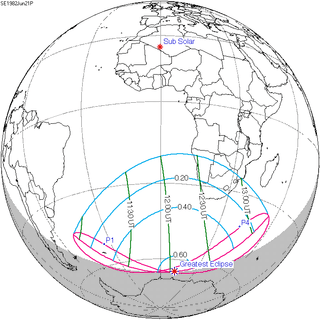 1982 June 21 Partial | -1.21017 | 122 | 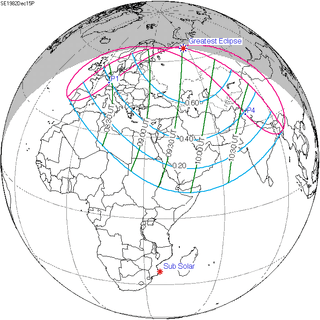 1982 December 15 Partial | 1.12928 | |
| 127 | 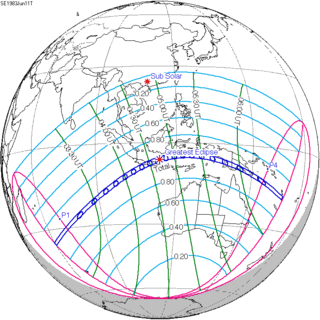 1983 June 11 Total | -0.49475 | 132 | 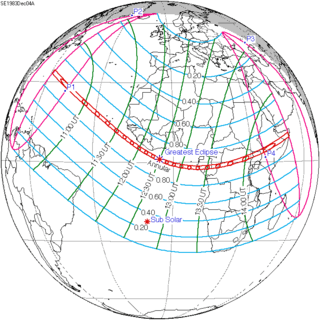 1983 December 4 Annular | 0.40150 | |
| 137 |  1984 May 30 Annular | 0.27552 | 142 Partial from Gisborne, NZ | 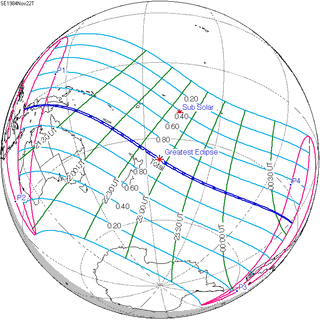 1984 November 22 Total | -0.31318 | |
| 147 | 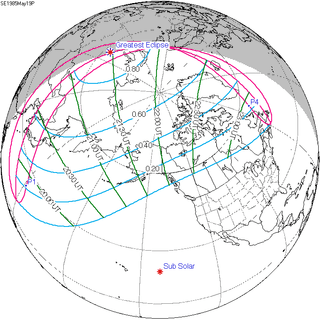 1985 May 19 Partial | 1.07197 | 152 | 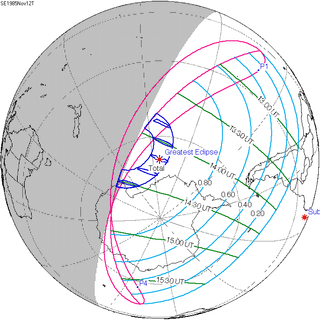 1985 November 12 Total | -0.97948 | |
Saros 137
It is a part of Saros cycle 137, repeating every 18 years, 11 days, containing 70 events. The series started with partial solar eclipse on May 25, 1389. It contains total eclipses from August 20, 1533 through December 6, 1695, first set of hybrid eclipses from December 17, 1713 through February 11, 1804, first set of annular eclipses from February 21, 1822 through March 25, 1876, second set of hybrid eclipses from April 6, 1894 through April 28, 1930, and second set of annular eclipses from May 9, 1948 through April 13, 2507. The series ends at member 70 as a partial eclipse on June 28, 2633. The longest duration of totality was 2 minutes, 55 seconds on September 10, 1569. Solar Saros 137 has 55 umbral eclipses from August 20, 1533 through April 13, 2507 (973.62 years). That's almost 1 millennium!
| Series members 30–40 occur between 1901 and 2100: | ||
|---|---|---|
| 30 | 31 | 32 |
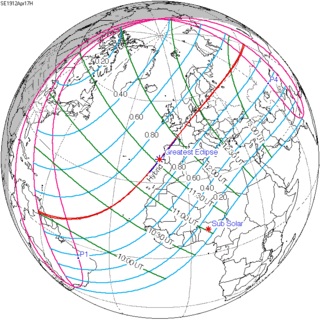 April 17, 1912 |
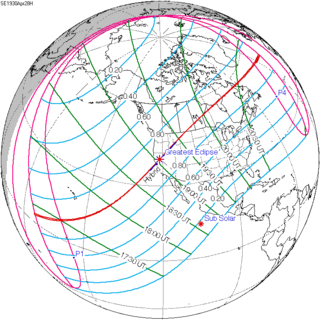 April 28, 1930 |
 May 9, 1948 |
| 33 | 34 | 35 |
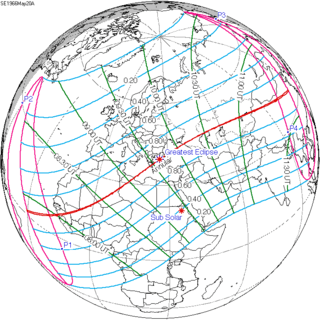 May 20, 1966 |
 May 30, 1984 |
 June 10, 2002 |
| 36 | 37 | 38 |
 June 21, 2020 |
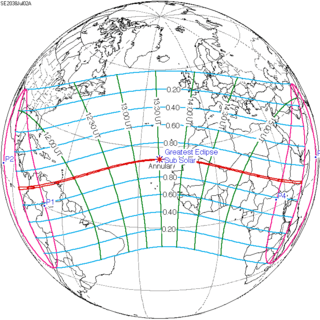 July 2, 2038 |
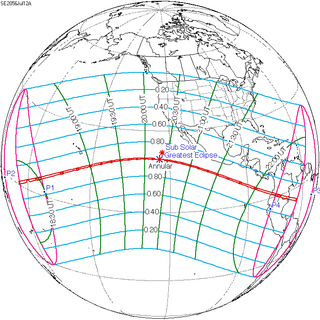 July 12, 2056 |
| 39 | 40 | |
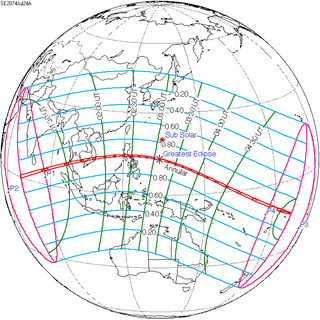 July 24, 2074 |
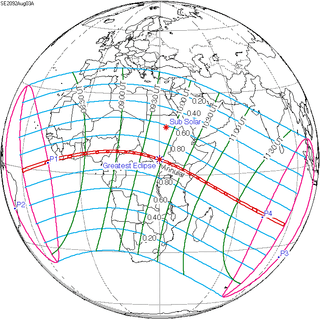 August 3, 2092 | |
Inex series
This eclipse is a part of the long period inex cycle, repeating at alternating nodes, every 358 synodic months (≈ 10,571.95 days, or 29 years minus 20 days). Their appearance and longitude are irregular due to a lack of synchronization with the anomalistic month (period of perigee). However, groupings of 3 inex cycles (≈ 87 years minus 2 months) comes close (≈ 1,151.02 anomalistic months), so eclipses are similar in these groupings.
| Inex series members between 1901 and 2100: | ||
|---|---|---|
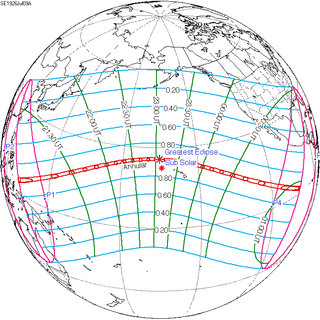 July 9, 1926 (Saros 135) |
 June 20, 1955 (Saros 136) |
 May 30, 1984 (Saros 137) |
 May 10, 2013 (Saros 138) |
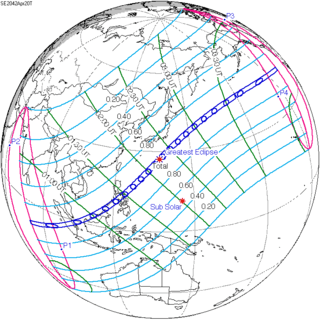 April 20, 2042 (Saros 139) |
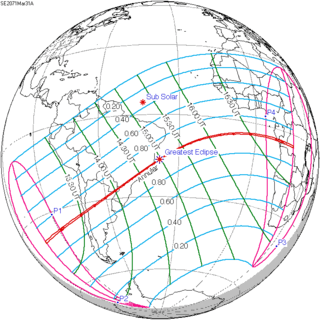 March 31, 2071 (Saros 140) |
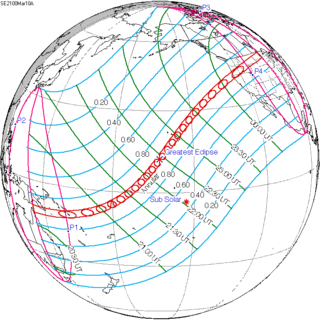 March 10, 2100 (Saros 141) |
||
Metonic series
The metonic series repeats eclipses every 19 years (6939.69 days), lasting about 5 cycles. Eclipses occur in nearly the same calendar date. In addition, the octon subseries repeats 1/5 of that or every 3.8 years (1387.94 days). All eclipses in this table occur at the Moon's ascending node.
| 22 eclipse events between January 5, 1935 and August 11, 2018 | ||||
|---|---|---|---|---|
| January 4-5 | October 23-24 | August 10-12 | May 30-31 | March 18-19 |
| 111 | 113 | 115 | 117 | 119 |
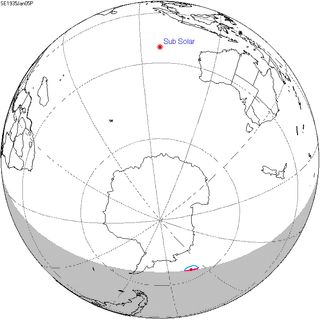 January 5, 1935 |
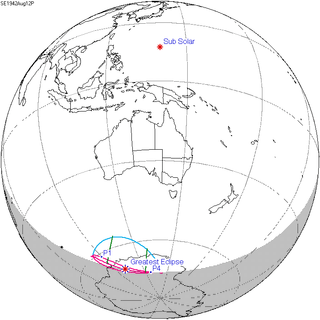 August 12, 1942 |
 May 30, 1946 |
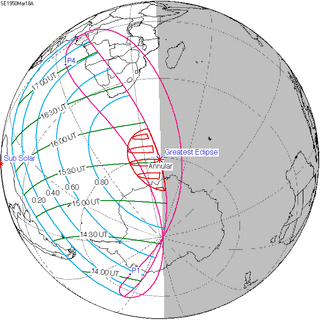 March 18, 1950 | |
| 121 | 123 | 125 | 127 | 129 |
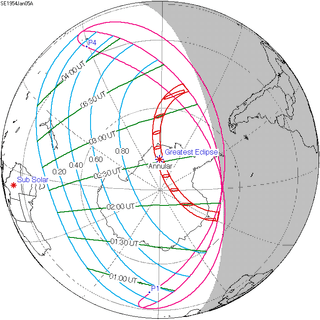 January 5, 1954 |
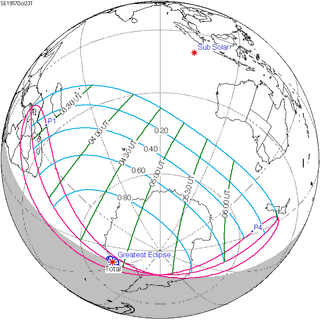 October 23, 1957 |
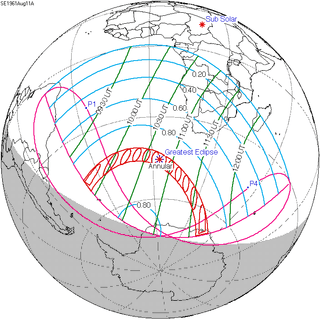 August 11, 1961 |
 May 30, 1965 |
 March 18, 1969 |
| 131 | 133 | 135 | 137 | 139 |
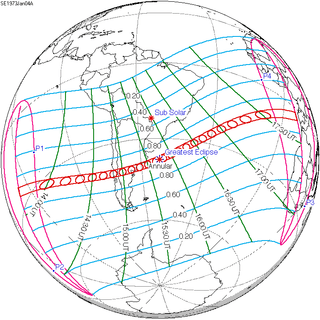 January 4, 1973 |
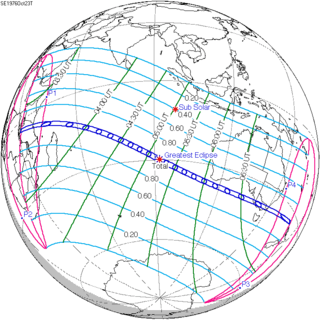 October 23, 1976 |
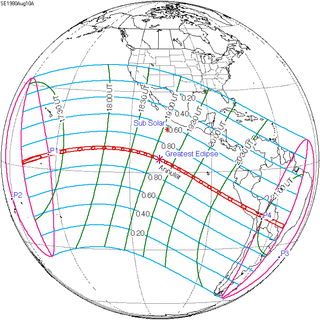 August 10, 1980 |
 May 30, 1984 |
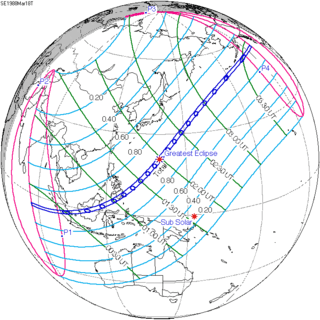 March 18, 1988 |
| 141 | 143 | 145 | 147 | 149 |
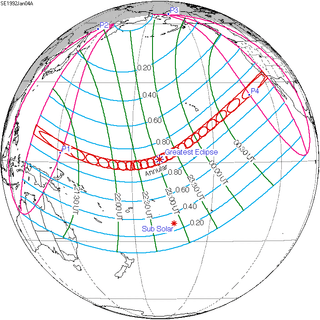 January 4, 1992 |
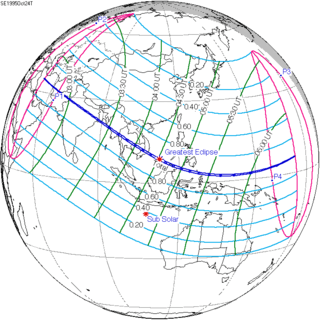 October 24, 1995 |
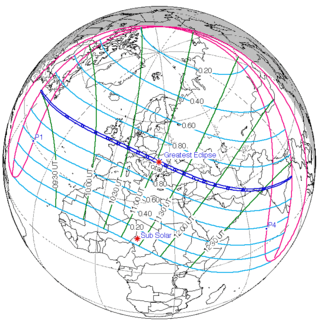 August 11, 1999 |
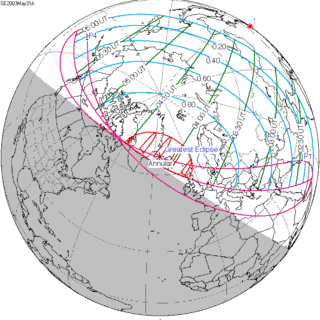 May 31, 2003 |
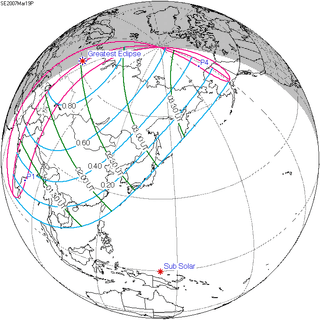 March 19, 2007 |
| 151 | 153 | 155 | 157 | 159 |
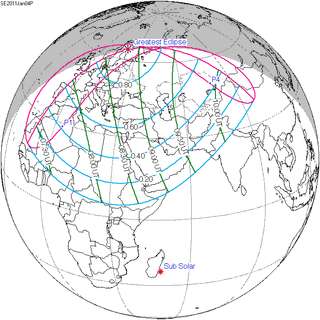 January 4, 2011 |
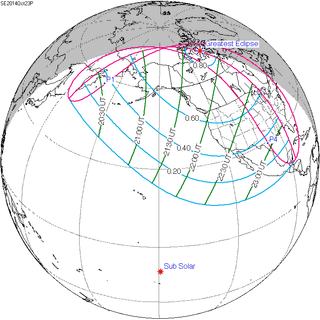 October 23, 2014 |
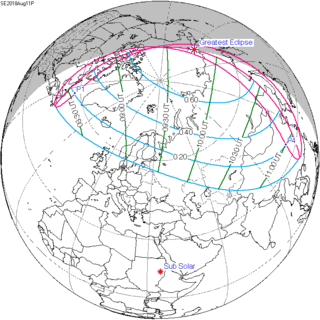 August 11, 2018 |
||
Notes
- van Gent, R.H. "Solar- and Lunar-Eclipse Predictions from Antiquity to the Present". A Catalogue of Eclipse Cycles. Utrecht University. Retrieved 6 October 2018.
References
- Earth visibility chart and eclipse statistics Eclipse Predictions by Fred Espenak, NASA/GSFC
| Wikimedia Commons has media related to Solar eclipse of 1984 May 30. |
.jpg)
